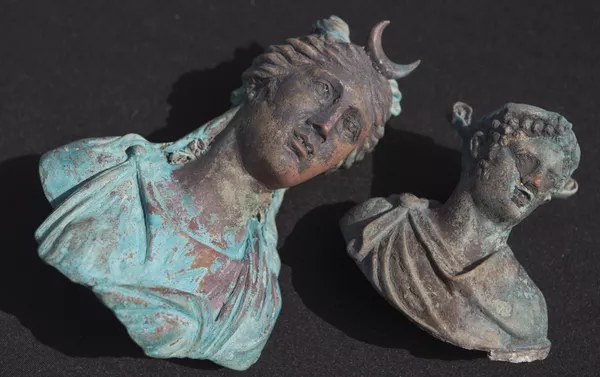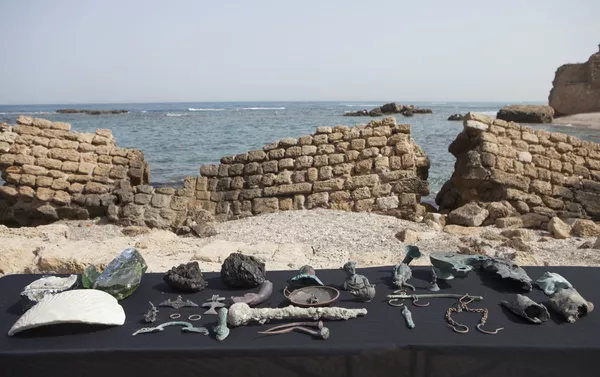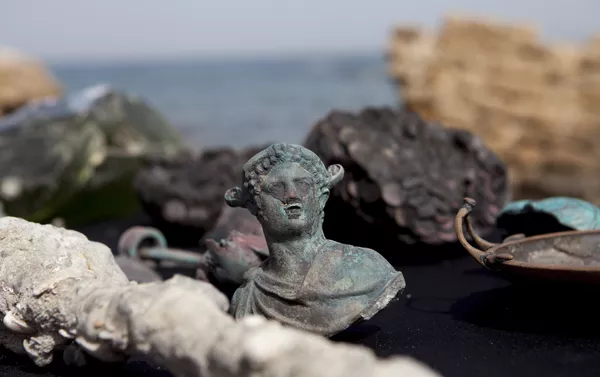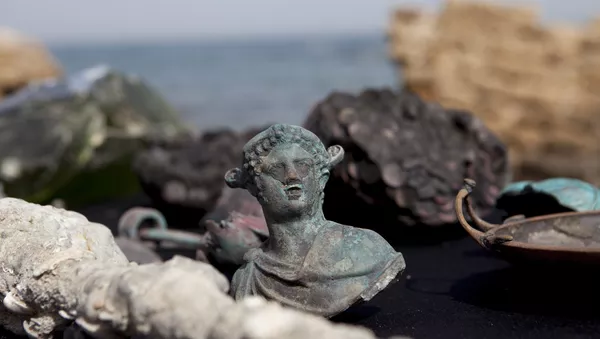БАКУ, 17 мая – Sputnik. Израильские аквалангисты-любители нашли разбивший о скалы древний корабль и подняли со дна Средиземного моря его груз – бронзовые изваяния античных богов и множество монет, возраст которых археологи оценили в 1,6 тысячи лет, сообщило Управление древностей Израиля.
Ученые говорят, что крушение, произошедшее, по-видимому, во времена римского императора Константина на входе в гавань города Кейсарии, дало шанс уцелеть статуям и прочим редким металлическим артефактам, которые везло на переплавку купеческое судно.
"Такого в Израиле не находили уже последние тридцать лет. Статуи из металла – редкая археологическая удача, потому что их обычно еще в древности плавили и пускали в переработку. Когда мы находим изделия из бронзы, это, как правило, случается на дне моря", — говорит глава отдела морской археологии Управления древностей Израиля Яаков Шарвит.










Среди найденных артефактов – бронзовые лампы в виде бога солнца и головы африканского раба, фигура богини луны, фрагменты трех скульптур бронзового литья в человеческий рост, разнообразные изделия в форме животных.
"Песок защитил статуи. Они в замечательном состоянии сохранности – будто их отлили вчера, а не 16 веков назад", — говорят археологи.
"Одним из самых больших сюрпризов стали два слитка, составленных из тысяч монет весом в 20 килограммов каждый. Они приобрели форму глиняных кувшинов, в которых их перевозили", — перечисляют ученые. На монетах изображены римский император Константин, правивший в IV веке нашей эры, и его неудачливый соперник Лициний.
На разбившееся судно наткнулись два аквалангиста-любителя из небольшого города Раананы в центре Израиля. Ран Файнштейн и Офер Раанан сообщили о находке властям, которые обещают премировать их грамотами и экскурсией по кладовым Управления древностей.
Это не первый случай, когда значимые археологические открытия в Израиле совершают непрофессионалы. Год назад в той же Кейсарии члены местного дайв-клуба нашли крупнейший в истории страны клад золотых монет, датированный учеными периодом правления средневековой мусульманской династии Фатимидов.

